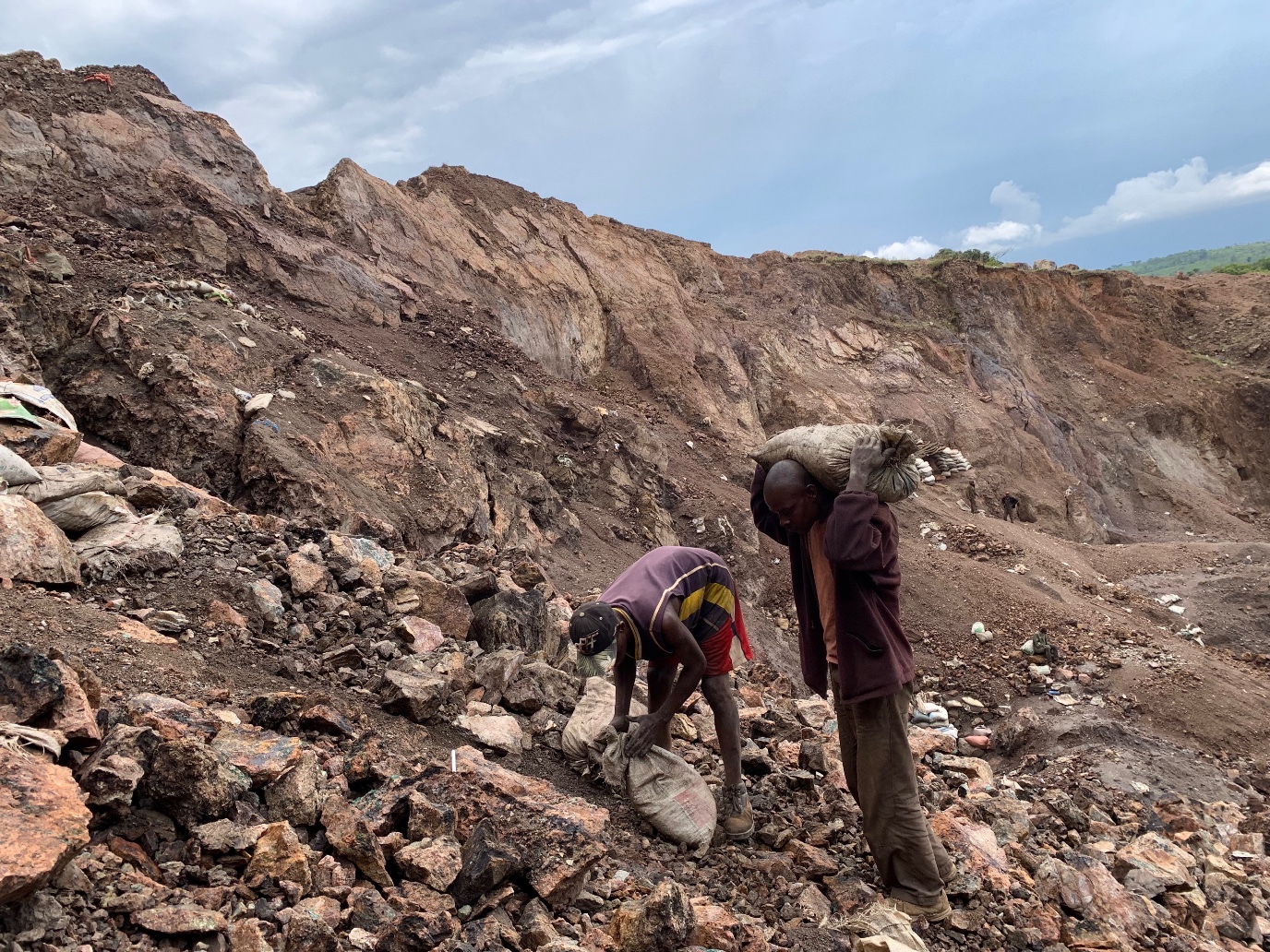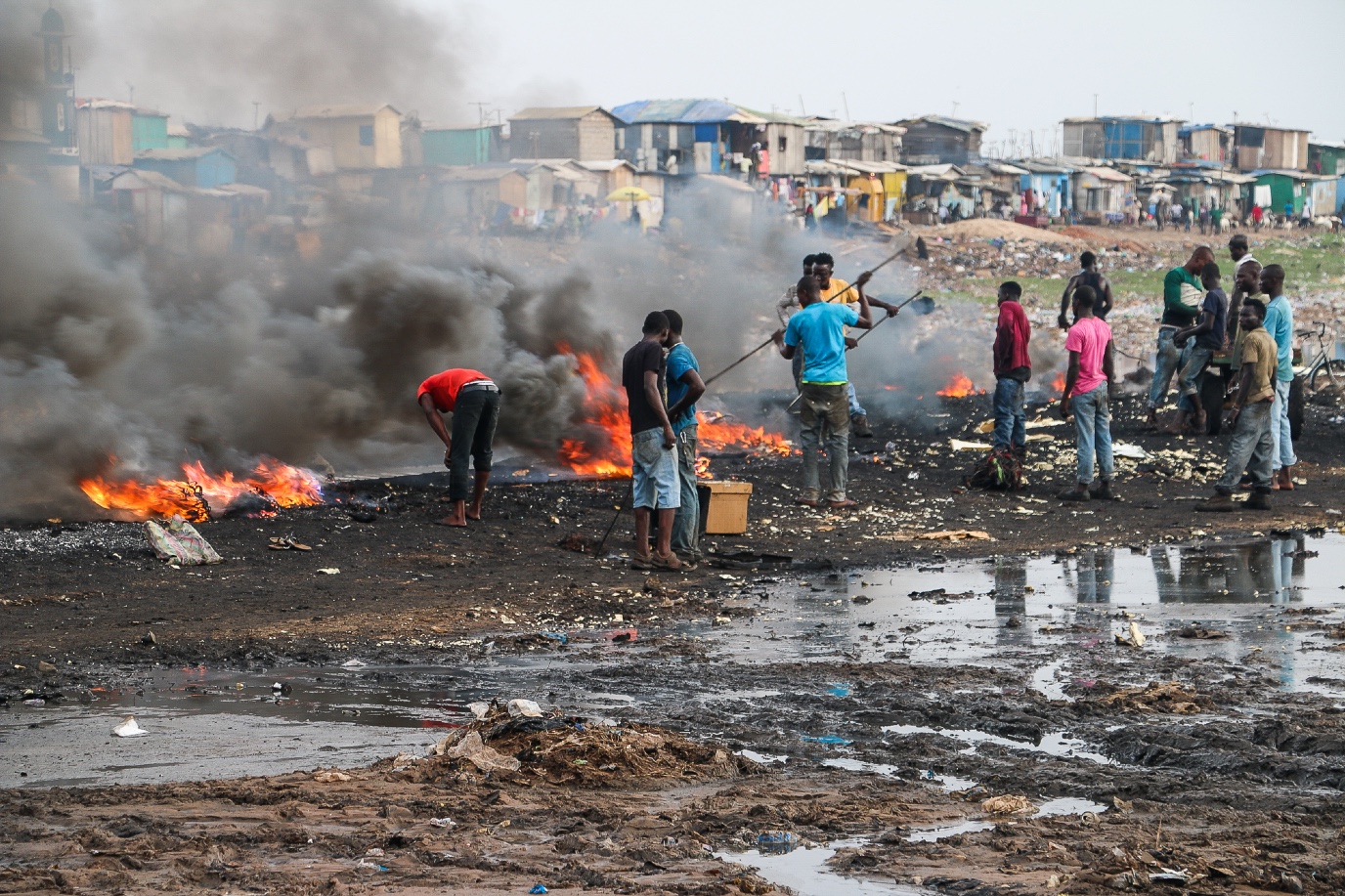A battery’s life: From the cradle to the grave

Rechargeable lithium batteries power equipment, vehicles, and store energy generated by wind or solar power for later use. These batteries are vital for the green energy transition, but how environmentally friendly are they? Researchers Xin Sun and Xiaohua Li examine their life cycle, from raw material extraction to end-of-life disposal, and investigate how recycling can be made more effective and greener.
The battery in your phone contains materials from all over the world: lithium from Chile or Australia, cobalt mined in the Democratic Republic of Congo, and rare earth minerals sourced from China. ‘My work involves assessing the environmental and social impact of batteries throughout their lifespan, explains assistant professor Xin Sun. He points out several problematic stages in a battery’s life, many of which occur before the battery has even been formed.
Critical materials - Lithium and cobalt

From under the salt flats in Chile, a watery mixture of salts, including lithium, is pumped into large ponds on the surface. It remains there until most of the water has evaporated, at which point the lithium can be extracted. ‘This method pollutes the groundwater and lowers water levels. Lakes in which flamingos used to live have disappeared, and so have the birds,’ explains Sun.

Cobalt production is also problematic. Around 90 percent of the cobalt mined in Congo, says Sun, is extracted by foreign companies, with the vast majority being Chinese. ‘The social impact is high, as there’s a lot of child labour in the cobalt mines.’

Meanwhile, explains Sun, many of the materials used in electric cars and solar panels could become critical. ‘Lithium use is projected to increase fortyfold by mid-century, and the use of rare earth metals could increase fivefold. That’s the problem I’m currently mapping, which highlights the need for public awareness.’ He adds that the environmental impact of recycling used materials is much lower than that of extracting these materials from minerals. ‘So, the big question is: how can we promote more recycling?’
Critical materials
The energy transition depends on several critical materials, such as lithium, cobalt, and rare earth metals. These are deemed ‘critical’ when they are vital for the economy (in this case, for batteries, solar panels, or wind turbines), but are also at risk of supply disruption. Lithium is widely recognized as a critical material due to its indispensable role in battery production.
One option to reduce this dependency is to move away from critical materials and use more readily available alternatives in batteries. Europe is exploring sodium-based batteries as an alternative for lithium. In the Northern Netherlands, huge amounts of sodium are available, and an existing industry is already extracting sodium in the region. However, sodium-based batteries currently have a much lower capacity than their lithium-based counterparts. Scientists, including those at the University of Groningen, are therefore working hard to increase the capacity of sodium batteries.
Mining battery waste

Recycling should be economically feasible, but also environmentally benign
Given the negative impact of newly mined materials, assistant professor Xiaohua Li is focusing on recycling spent batteries. ‘As the use of lithium batteries grows rapidly, there will be millions of tons of battery waste in the near future,’ she explains. However, mining this waste is not necessarily sustainable. The current state-of-art chemical recycling methods are pyrometallurgy and hydrometallurgy. The intensive energy consumption in pyrometallurgy (melting) makes it unattractive. Dissolving the batteries in strong acids (hydrometallurgy) produces dangerous chemical waste. Li: ‘Recycling should be economically feasible, but also environmentally benign.’
Although recycling NMC batteries is economically feasible, only the nickel, manganese, and cobalt can be recovered efficiently. Recycling lithium iron phosphate (LFP) batteries is still challenging, as the lithium concentration is too low in LFP to make it economically feasible. As lithium from recycled batteries is more expensive than newly mined lithium, recycling companies simply do not extract it. To change this, Li is working on new processes, aiming to improve efficiency and reduce waste. Together with the start-up company Ioniqs, she is investigating the recycling of metals in batteries using electrochemical separation. This is currently being tested at lab scale, and the results so far look promising.
The practical difficulties of recycling

This is an example of how the free market is making recycling much more difficult
However, several other issues make recycling difficult. ‘The biggest market is electric vehicle batteries’, says Li. These battery packs are designed for easy placement in the car frames, but they are very difficult to take apart. Sun also comments on this issue: ‘Cars running on petrol are fully designed and controlled by traditional car manufacturers, whereas the new electric vehicles are created by three different parties: companies that supply critical materials (such as lithium, nickel, and cobalt); companies that produce the battery packs; and finally, car makers.’ The focal point of negotiations among stakeholders in this complex industrial chain is cost, rather than recyclability. Sun: ‘This is an example of how the free market is making recycling much more difficult.’

Li adds: ‘Each car type may contain battery modules of a different shape or chemical composition, so it is difficult to design an automated process to recycle them from a mixed stream of battery waste.’ New regulations may help improve this: the exact type must now be specified on the casing of new batteries. However, even getting the old car batteries to a recycling plant is problematic. Transporting them is dangerous: damaged car batteries can catch fire and are nearly impossible to extinguish. This means there are all kinds of rules and regulations for the transport of old car batteries. Sun: ‘In Europe, these regulations are very strict, and overall recycling costs are higher. Recycling rates are therefore much lower than in China.’ Li’s research on recycling could help change this. ‘It’s still mostly ideas, and now we have to make it work!’
You can find the other installments in this series in the box below.
There is a small chance that rechargeable lithium batteries will ignite or even explode. Giuseppe Portale, associate professor in Polymer Chemistry at the University of Groningen, is working on safer batteries.
Edwin Otten is working on a battery that stores electric power in large containers of fluid. To make such a battery effective and affordable, a lot more research is still needed.
A great deal of research is required to develop the best or cleanest batteries. But how does a battery actually work?
An €800 million programme funded by the Dutch National Growth Fund aims to stimulate the Dutch battery ecosystem and make a global impact. Scientists from the University of Groningen contribute to this programme, designing and building the batteries of the future.
More news
-
05 November 2025
Ten years of lifting paving stones
-
04 November 2025
Prostheses with a human-centered approach
-
04 November 2025
AI Factory in Groningen advances digital sovereignty
